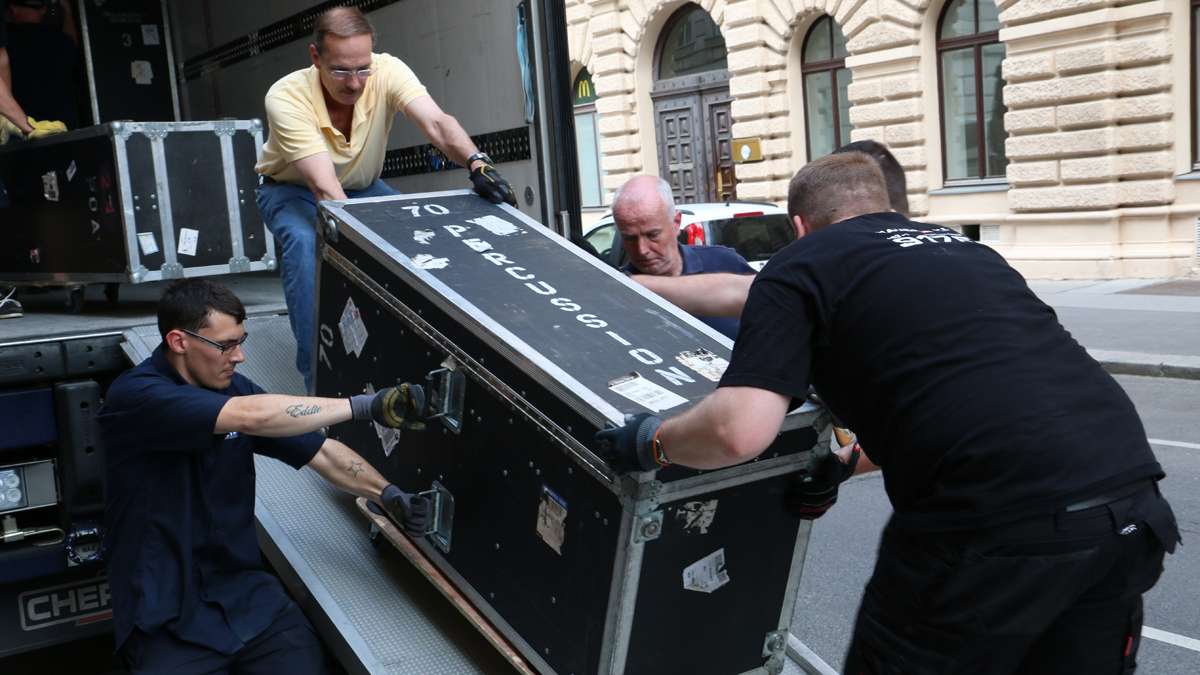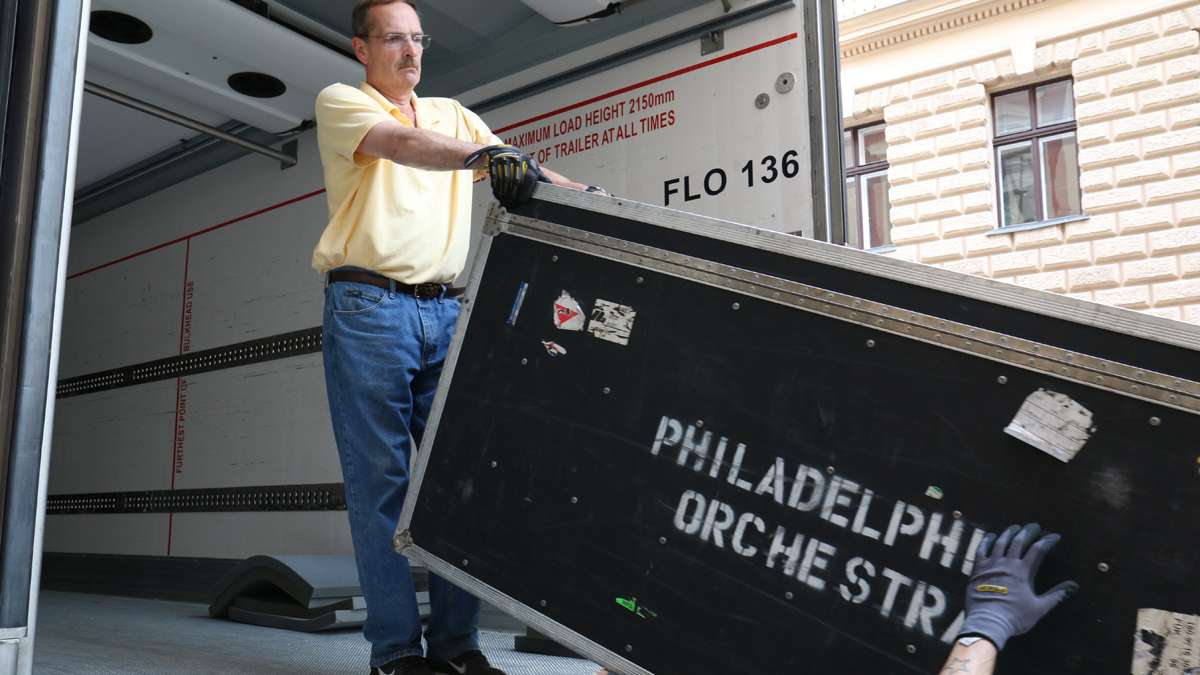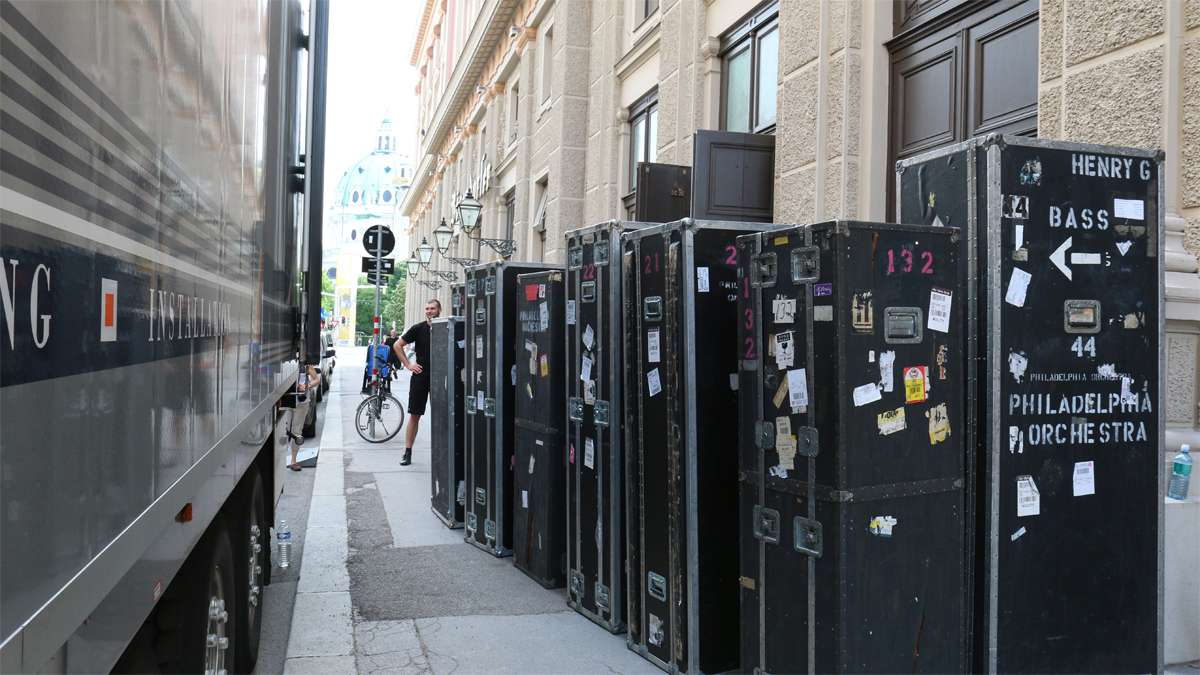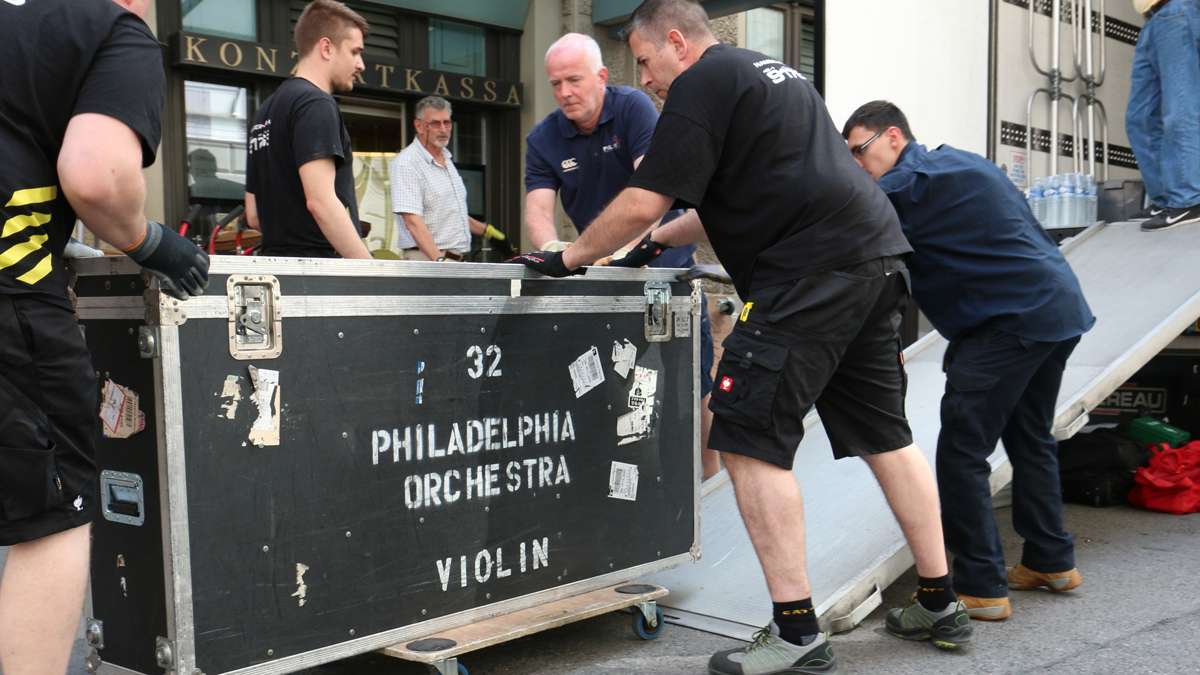Orchestra roadies have their own show before the Fabulous Philadelphians can play [photos]
ListenBefore the Philadelphia Orchestra can play its music, the roadies must perfectly execute an intricate dance of moving millions of dollars worth of equipment, gear and evening wear from one challenging venue to the next.
This week, the Philadelphia Orchestra performed two concerts in the historic Wiener Musikverein concert hall, as part of its three-week European tour, including a program by composers strongly associated with Vienna: Beethoven, Strauss, and Brahms.
“We have played the music of the Vienna for the Viennese,” conductor Yannick Nezet-Seguin said to the audience after the concert, noting it was one of the most memorable ones for the orchestra. This is its first European tour led by Nezet-Seguin.
The Philadelphia Orchestra has played the Musikverein many times in the past, under previous music directors. The orchestra is very familiar with its beautiful interior, adapting well to its unique acoustics.
The stagehands, likewise, are familiar of the quirks in the 19th-century building. Their job is to unload 121 intrument-filled transportation trunks off trucks and find places to store them in the building.
“When we first came here they used to not have an elevator,” said Jim Sweeney, a stagehand with the orchestra for 25 years. His father was an orchestra stagehand before him for 32 years. He gestured to the younger hands unloading trunks, local hires via the trucking company.
“They had guys like this — big guys — who used furniture straps, and they would carry instruments up three flights of marble stairs,” said Sweeney. “Now they have an elevator, thank God.”
The Musikverein is a tight squeeze. Like most building in the historic Wein district of Vienna, the building cannot expand its footprint, so renovations had to go downward. The basement where the instrument trunks are stored goes down four levels.
“We have to face a situation of a hall build 150 years ago, and it was not built for an orchestra with equipment like this,” said Konstantin Mortisch, the Orchestra’s European booking agent. “The second challenge is we have three orchestras at the same in the same house. The Vienna Symphony is now recording onstage, they have equipment in house. We have the Vienna Philharmonic rehearsing tomorrow in house, and the Philadelphia orchestra’s coming in with their equipment.”
Three orchestras jostling for limited storage space means instrument cases are scattered through the basement, with percussion on one level, woodwinds on another, strings all over the place.
Musicians do not carry their own instruments while on tour. For some (double bass, tuba, etc) it’s impossible. For others with smaller instruments, it’s a safety issue: violins are better protected in trunks transported via climate-controlled trucks than bouncing along airport security belts as a carry-on.
A trunk can hold eight violins, or two cellos, or one double bass, or three bassoons (contrabassoon gets its own trunk) and can weigh has much as 70 pounds. But it’s not their weight that gives the stagehands worry. It’s the value — a trunk of vintage concert violins can be worth a million dollars or more.
The musicians also keep their concert wardrobes in trunks — all their shoes, dresses, coattails, etc, along with bows, strings, reeds, and anything else they might need for a performance.
“We have 30 wardrobe trunks, which are like 30 coffins,” said Moritsch. “They are so heavy, and they take so much space.”
The challenge does not stop there. The stage of the Musikverein in Vienna is unusually small, obstructed by tiered steps. Each musician has to sit on a chair with short back legs so the seat will be level when the chair straddles a step. With the skill of a piano soloist, the stagehands are able to navigate the maze of basement storage, and the steeplechase of a stage, to set up the entire orchestra in under an hour.
During the performance, the crew gets a little breathing room. Having been here enough times, Sweeney has learned that the best bratwurst in Vienna comes from a sidewalk vendor about a block away.
“A little cart stand. Just like in Philadelphia, but better,” said Sweeney. “They serve beer, also, which is nice.”
Sweeney and crew will break down all the instruments, pack them back into the trunks, and load them onto a truck bound for Amsterdam, about a 16 hour drive away. Then they will do it all over again, in another city.
Funding for coverage of the Philadelphia Orchestra’s trip comes from Visit Philadelphia at visitphilly.com
WHYY is your source for fact-based, in-depth journalism and information. As a nonprofit organization, we rely on financial support from readers like you. Please give today.










